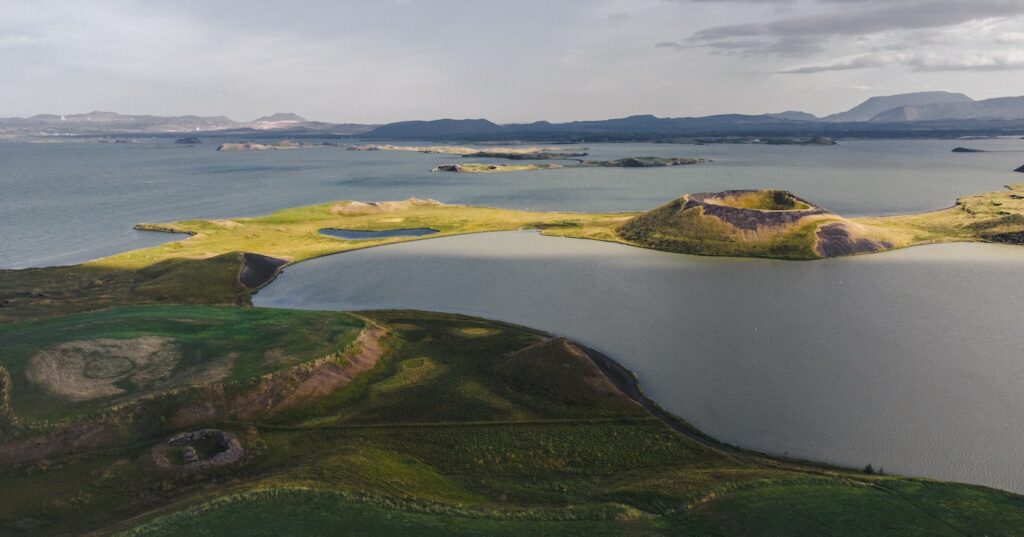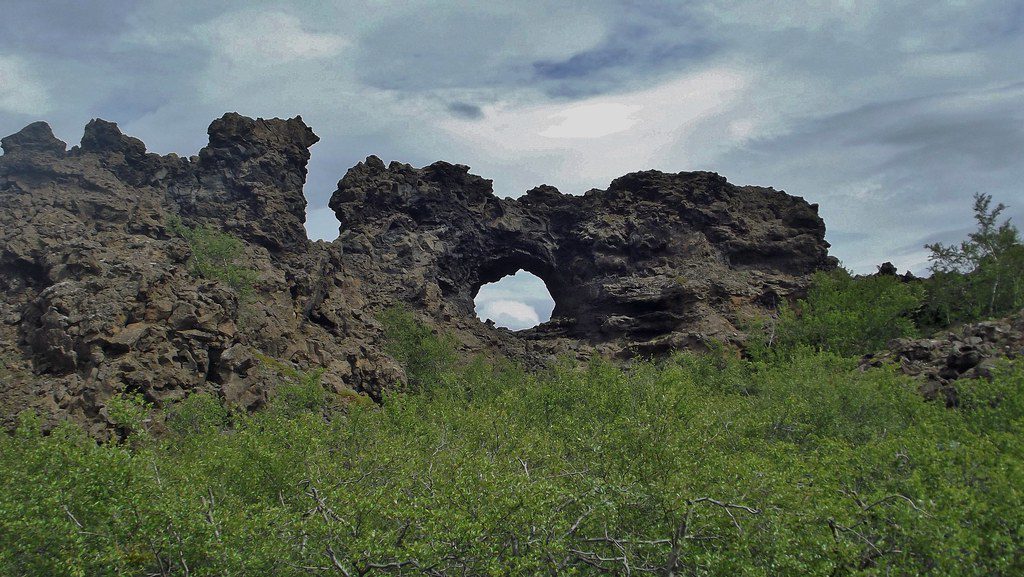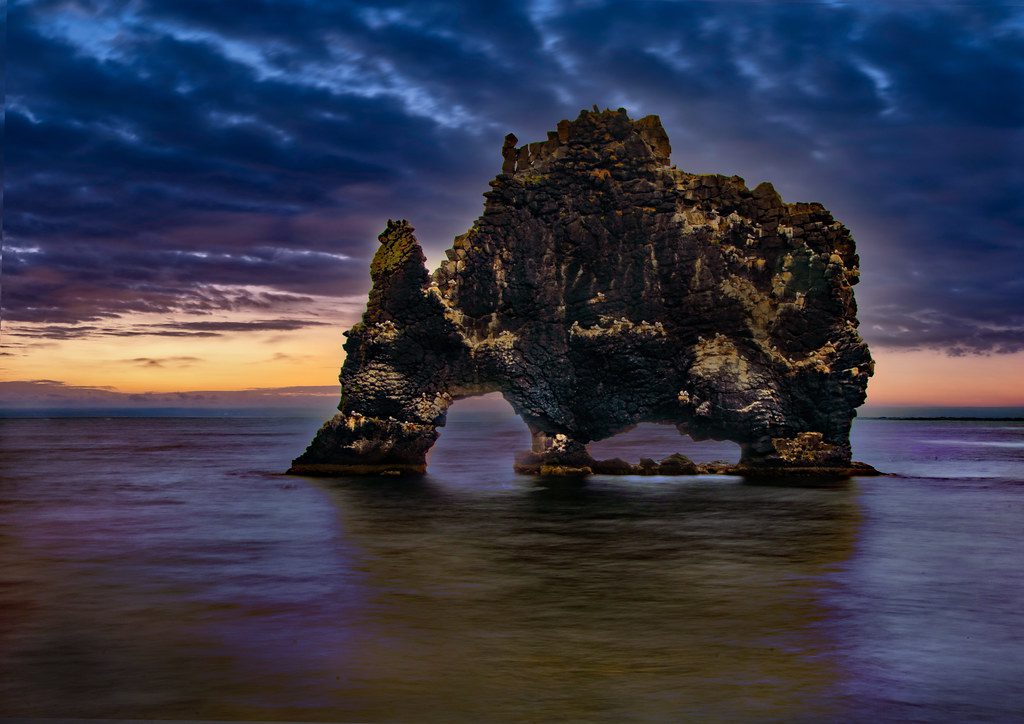North Iceland is very close to the Arctic Circle. You would be forgiven to think that the area is pretty cold, but in reality, it experiences some of the mildest temperatures in Iceland. The North is rich in wildlife, amazing volcanic landscapes, fjords, and other attractions. It was recently named by Lonely Planet as a top European destination.
Touring Iceland – Important Tips
Thankfully, you no longer have to worry about Covid-19 restrictions when entering Iceland – they have all been lifted, even for the unvaccinated.
You should plan your trip early. Although Iceland has a good tourism infrastructure, you still have to book hotels early in advance to avoid disappointment, especially in summer. You should also book your activities in advance since activities sell out during a busy season, including ferries to the Westmann Islands and popular attractions like the Blue Lagoon.
Although airfares to Iceland are cheap, Iceland is not a cheap country to visit. Budget wisely and choose your destinations and activities carefully.
Tourists do a lot of driving in Iceland. You will need an international driving license for this. Go for an SUV since some remote areas have poor road conditions. If you are visiting during winter, a 4WD vehicle is essential. Consider getting a guided tour where someone drives you.
You expect to move hotels or accommodation quite a bit in Iceland unless you are willing to drive back and forth to different activities and attractions, which is not very practical. Iceland is a vast country and moving accommodation allows you to experience much more.
You do not need too much hard currency since you can use a credit card for almost everything in Iceland.
Be prepared by ensuring you stock up on bottled water and protein bars and snacks. Iceland is vast and sparsely populated.
Bring a raincoat and waterproof pants to avoid getting wet. Iceland is the land of ice and fire – there is water and ice everywhere. The weather is also unpredictable and it can rain any time.
You can check road conditions and closures from the safetravel.is website. Install the 112 Iceland App for speedy and easy information transfer. In case you get into trouble, the Icelandic emergency number is 112.
Daytime hours vary by season – days are longer in summer and nights are longer in winter. Be prepared for extremes. You can see the northern lights (aurora borealis) from fall in September, and you can enjoy the midnight sun in the summer months. The sun rises at 10 am and sets at 4 pm in winter, while some days have 24 hours of sunlight in the North during summer.
When on the black sand beaches, stay away from the edge of the water as the waves are rough with strong undercurrents.
Do not worry about the language barrier and having to learn common Icelandic words – Everyone in Iceland speaks excellent English.

Top Places to see along the way in North Iceland
A Visit to Dettifoss – The Most Powerful Waterfall in Europe
Dettifoss in the Vatnajokull National Park is the most powerful waterfall in Europe. The name Dettifoss loosely translates to ‘falling’, due to the incredible force generated by the waterfall. The exhilarating power of the waterfall, which makes the ground shake as you approach it, makes this a good place to reconnect with and appreciate nature. The waterfall is immortalized in the opening scene of the 2012 movie – Prometheus.
A Visit to Goðafoss – Waterfall of the Gods
Godafoss, which is nicknamed Waterfall of the Gods, is the most awe-striking waterfall in North Iceland and one of the prettiest in Europe. The horse-shoe waterfall on Skjálfandafljót River makes for the perfect photo opportunity.
A Visit to Lake Myvatn
Lake Myvatn is enchanting by itself. The Myvatn Nature Baths are the equivalent of the Blue Lagoon in the North, but with a fraction of visitors (and the price!). It is also surrounded by the pseudocraters Skutustadagigar, Hverfjall, which is a pitch-black crater mountain, Askja volcanic crater’s turquoise blue water, Krafla caldera, and Hverarond hot spring, all worth visiting.
Whale Watching
Husavik on Skjalfandi Bay is the whale-watching mecca of Europe. You get to see up to 23 species of cetaceans on a boat ride. The most common are humpback and minke whales, but you can even spot the rare blue whale. White-beaked dolphins and seals can also be seen.
Riding Icelandic Horses in Hunavatnssysla
The Hunavatnssysla region offers fantastic opportunities for horseback riding. Icelandic horses grow extensive hair in the winter, becoming complete fur balls. In summer, they shed this hair and look completely different.
Seeing the Rock Formations at Dimmuborgir
Dimmuborgir is made up of bizarre lava formations that seem out of this world. Immerse yourself in an area that has inspired much Icelandic folklore.
Hiking up Hverfell
Hverfell is a volcano that can be seen from miles away. It is black, broad, and conical. You can take a short hike to the top of the crater to have a 360-degree view of the flat landscape below.
A visit to the Ásbyrgi canyon
When you drive to the northernmost corner of Vatnajökull National Park, you will come across the impressive Ásbyrgi canyon landscape. When you look down from the top of the canyon’s rock walls, you will be awed by the horseshoe-shaped canyon that is carpeted in lush forest and plant life. Trees are scarce in Iceland, but this canyon contains thick woodland of willow and birch as well as spruce, pine, and larch. The greenery has flourished because of the large rocks and towering cliffs that offer shelter from strong winds and harsh weather conditions.
There are two schools of thought on how the canyon was formed. Scientists believe that the canyon formed as a result of glacial flooding of Jökulsá á Fjöllum river in the last Ice Age, but Norse mythology attributes the formation to god Odin flying over the region on Sleipnir, his 8-legged flying horse, and the horse touched the earth with his giant hoof. There are hiking trails that are well maintained, and you also get to see birdlife, waterfalls, and rivers.
Skagafjörður valley
The remote Skagafjörður valley is set by a beautiful fjord that goes by the same name. The blissful valley is the perfect place to explore for those looking for a picturesque countryside retreat. The valley has sweeping pastures where Icelandic horses roam. In fact, the population of Icelandic horses is greater than that of humans in the valley. You can go on a horse riding excursion, discover the mighty gorges, rocky islands, and soaring mountains, and catch a glimpse of Drangey, Málmey, and Lundey isles that rise from the fjord waters. Skagafjörður valley gives you breathtaking sunsets. If you are visiting during summertime, stay up late to experience the midnight sun. If you are visiting during the winter, the proximity to the Arctic Circle, lack of light pollution, and wide open landscapes make this the perfect place to chase the northern lights.
Krafla Volcano
Krafla volcano is still geothermally active, making staring down its crater a thrilling experience. The volcano stands at 818 meters (2,690 feet) and has a 10-kilometer (6-mile) wide caldera. Lying in a fissure zone, the volcano erupted 9 times between 1974 and 1984 – events called the “Fires of Krafla.” You can explore the mud pots, lava fields, and fumaroles around Krafla volcano and the neighboring Leirhnjúkur. Just a 20-minute walk away from Krafla is Viti, one of the best-known craters in the country. Viti means “hell,” which refers to the violence of volcanism.
Visit the Town of Akureyri
Although North Iceland is known for its natural attractions, consider spicing things up with a visit to Akureyri, the second largest town in the country after Reykjavík. Akureyri, which is nicknamed the “Capital of the North,” has a population of just 18,000, which is pretty big when you have been journeying through the vast landscapes. While at Akureyri, be on the lookout for original buildings like the schoolhouse, hospital, and theatre that date back to 1827. Laxdalshús is an even older wooden house that was constructed in 1795. Other than admiring the architecture of Akureyri, you can also visit the Lystigarðurinn botanical garden, which is the northernmost botanical garden in the world. Other attractions include the Icelandic Folk Art Museum and whale-watching activities.

Hverír/Námafjall geothermal area
No visit to Iceland is complete without a visit to an Icelandic geothermal area. Hverfell/Hverfjall is one such geothermal area, with eruptions having taken place around 3,000 years ago. This symmetric explosion crater is surrounded by hot springs, lava fields, and smaller craters. Hverfell is the larger of these explosion craters, with a diameter of 1 kilometer and a depth of 140 meters. You can hike around the crater, but being in an acidic area, the vegetation is fragile, and you should, therefore, stay on the path.
Hvítserkur Rock Formation
Hvítserkur is a famous rock formation that rises from Húnaflói Bay. The basalt rock stack rises 49 feet (15 meters) in height. Nicknamed the Troll of Northwest Iceland, you’ll enjoy the most breathtaking views of the rock formation along the eastern shore of the Vatnsnes Peninsula. Hvítserkur, which translates to “white shirt,” has the name’s origins from the droppings of birds that nest on the rock, painting it white. Fulmar, shag, and seagulls all scramble for some room on the rock, with the continual movement causing it to appear alive.
Lofthellir Cave
The Lofthellir Cave is an impressive lava cave that is characterized by permanent ice on the inside. The cave is 370 meters long with varying widths along its stretch. There are open spaces where you can walk and other areas where you have to crawl. Like many natural attractions in the country, the eruptions that created Lofthellir Cave brought forth minerals and various elements from the mantle of the Earth, which gives the cave its interesting palettes. For instance, there are red iron, green copper, and yellow sulfur deposits. The ice of Lofthellir cave results when water trickling through permeable rocks drips down the cave ceiling and walls. Since the temperature stays around freezing here even during summer, the ice does not melt, resulting in icicles that keep growing, making Lofthellir cave a sight to behold.
Askja Caldera
The Askja Caldera is located on the northern side of the Vatnajökull glacier. The caldera is known for its dramatic eruptions. This was the Apollo astronauts’ training area due to its landscape’s resemblance to the terrain of the moon. The zenith of the mountains that form the crater is 1510 meters (4954 feet), which is impressively high compared to most mountains in Iceland. The 50 square kilometer caldera was formed towards the end of the last Ice Age as a result of the magma chamber of the Dyngjufjöll Mountains collapsing, leading the area to fall upon itself.
Öskjuvatn, the second-deepest lake in Iceland, is found in Askja. It lies roughly 164 feet (50 meters) below the main floor of the caldera and covers around five square miles (twelve square kilometers), with a depth of up to 722 feet (220 meters). It resulted from a huge volcanic eruption in 1875, which spread poisonous ash all over the east fjords all the way to Poland. The explosion also led to the formation of smaller calderas inside the larger one. The lake is frozen most of the year, one example of why Iceland is referred to as the land of fire and ice. Although Askja has not erupted since 1961, it occasionally rumbles, creating tremors. You will need a four-wheel vehicle to access the hiking trails during summertime. There are mountain huts where you can sleep the night or picnic.
Víti is another geothermal crater lake within the Askja Caldera worth a visit. The temperature of the lake’s water is 25° Celsius, making this the ideal place for a pretty plunge. The landscape surrounding the lake is jet black due to past volcanic activity and also features sand dunes, which give relaxing blue hues to the lake and contrast the dramatic landscape.
Aldeyjarfoss Waterfall
Aldeyjarfoss is a stunning waterfall that plummets 20 meters into a beautiful blue lagoon located along the Skjálfandafljót River. Other than the waterfall, you also get to see remarkable geological elements in the area surrounding the waterfall, which sit within rows of hexagonal basalt columns that are perfectly symmetrical. So, how was this stunning waterfall formed? During a past volcanic eruption, lava poured down the cliff faces of Aldeyjarfoss, and the exposed outer lava cooled and solidified faster than the inner lava. The symmetrical basalt columns, which look unnatural, are a result of lava moving such that it cooled swiftly and evenly over flat surfaces, creating columns that cracked due to varying levels of internal pressure. Other parts of Iceland with similarly sculptured basalt columns include the coastal basalt formations around the Svartifoss and at the Reynisfjara black sand beach and “the black waterfall” in Skaftafell.
Glaumbær Turf Houses
The Glaumbær are turf farm buildings constructed in 18 and 19 centuries. The farm buildings, which were remodeled in 1947, make the perfect backdrop for those who want to experience typical life on a farm in the 19th century. There is an amazing coffee shop at Ashus. The Word is that the Gudridur Thorbjarnardottir, who was the first European mother on American soil, called Glaumbær home during the Saga Age.
The Arctic Henge
The Arctic Henge is a monument to Norse pagan beliefs. It has its origins in Völuspá, a famous poem from the Edda (the Edda is like the Christians’ holy book in the Norse belief systems). This is a modern Stonehenge comprising a large column of 4 pillars within 4 huge stone arches that are surrounded by 72 blocks, representing the 72 dwarves that represent symbols of the seasons. These arches have been set in such a way that they capture the Midnight Sun’s light cutting across the sky each summer night, with the southernmost arch being aligned perfectly with the celestial body come the 21st of June.
Visit the Hofsós basalt columns
Hofsós basalt columns are some of the most beautiful basalt columns in Iceland. The basalt columns are located in the picturesque village of Hófsos, where you can park and take a short walk down the stairs to the cliffs built up of the basalt columns. There is also a beautiful swimming pool at Hofsós where you can enjoy a swim.
Grettislaug Geothermal Pool
There are many geothermal pools in Iceland. One of the most iconic is the Grettislaug geothermal pool at Reykir in Skagafjordur fjord. This, according to legend, is the bathing place of Grettir the Strong (from Saga lore). The bathing spot constructed with natural stones is located by the seaside, giving amazing views. Grettislaug is the older of 2 geothermal pools at Reykir, where guests are welcome to bathe. As the legend goes, Grettir, who was an outlaw by then, lived on Drangey Island, which is visible from the pool. He swam ashore, and since he was feeling cold from the swim, he spent the night in the pool to get warm. Grettislaug and the other pool, originally called Reykjalaug and renamed Jarlslaug in honor of Jon Eiriksson, were destroyed in a great storm in the early 20th century. Locals came together to rebuild them in 1992. The water temperature in Grettislaug is 39°C (100°F) year-round. There are dressing rooms available for those who want to take a swim. Being on private property, there is a small entrance fee.
Visit the Island of Grímsey
Grímsey, located 40 kilometers off the coast of mainland Iceland, is the northernmost inhabited landmass in the country. It straddles so closely to the Arctic Circle that it is technically only Iceland’s part found in the Arctic Circle. This is a haven for Geography lovers. By the mid-21st century, Grímsey will no longer be part of the Arctic Circle because Arctic Circle’s boundaries move roughly 14.5 meters every year due to natural oscillations of the earth’s axis. There is an old monument to the crossing of Grímsey with the Arctic Circle built years ago, and a second one built in 2017 reflecting its movement. The memorial’s shape reflects the rolling motion of the real Arctic Circle. The memorial is a popular destination on the island. In spite of its closeness to the Arctic Circle, the temperature here is moderate, unlike elsewhere in the Arctic Circle, due to the Gulf Stream carrying warm water from the Gulf of Mexico.
Although almost completely devoid of trees, the island has lush marshland, moss, and grass. The island’s elevated cliffs and the absence of predators transform Grímsey into a sanctuary for Atlantic puffins, Razorbills, Auks, and the Northern Fulmar, among other bird life. If you are a history lover, you can visit a small 1867-built church made of wood. It was later remodeled in 1932. The church holds a Leonardo Da Vinci imitation painting that is locally produced. You can access the island from Akureyri through regular ferries and flights.

At Deluxe Iceland, we are a fully authorized luxury travel agency & tour operator. We offer different packages, including privately guided tours, private day tours, and self-drive tours for North Iceland. Our guides have vast experience, ensuring you get the most out of your tour. Our packages are customizable to fit your needs.




